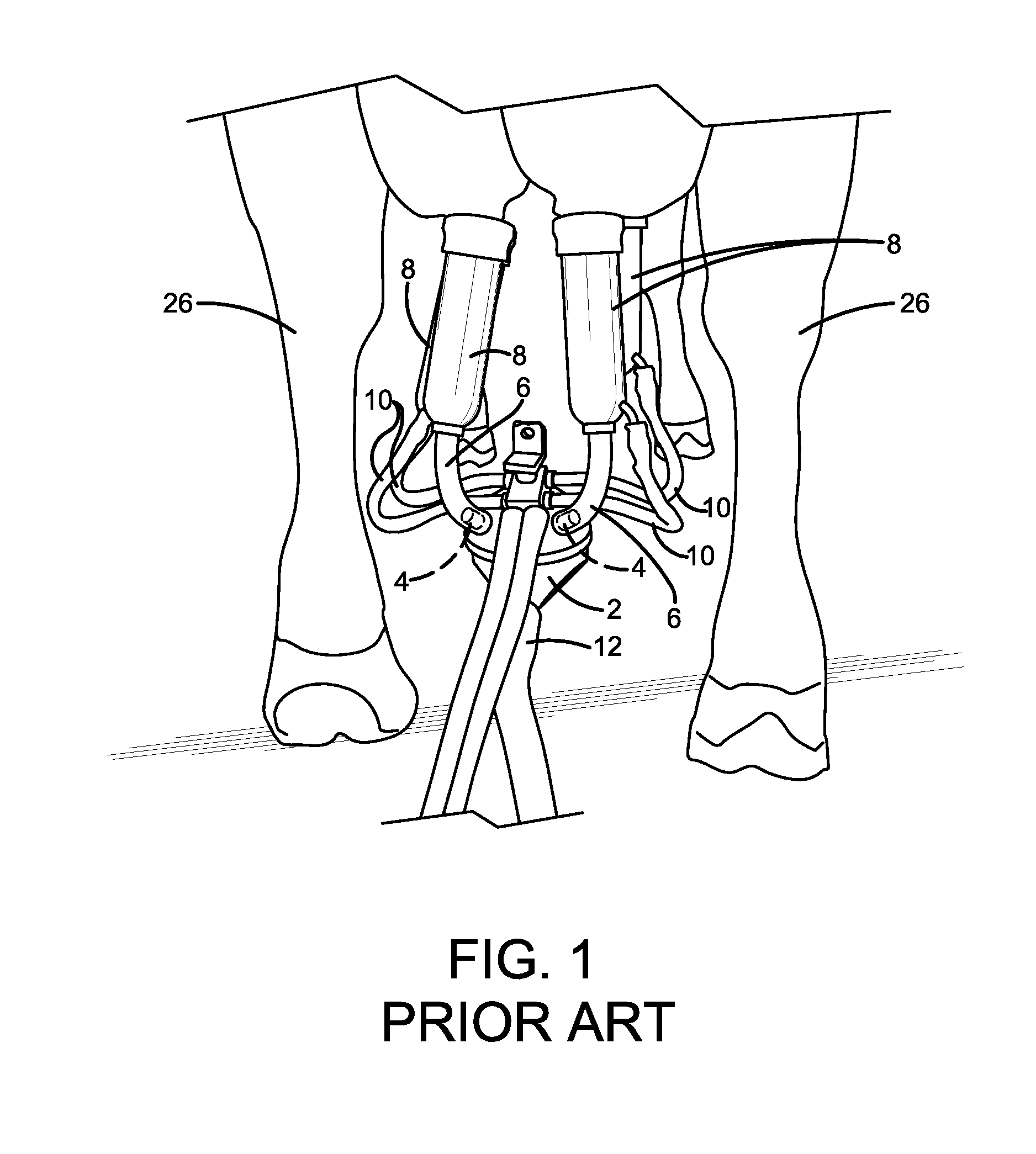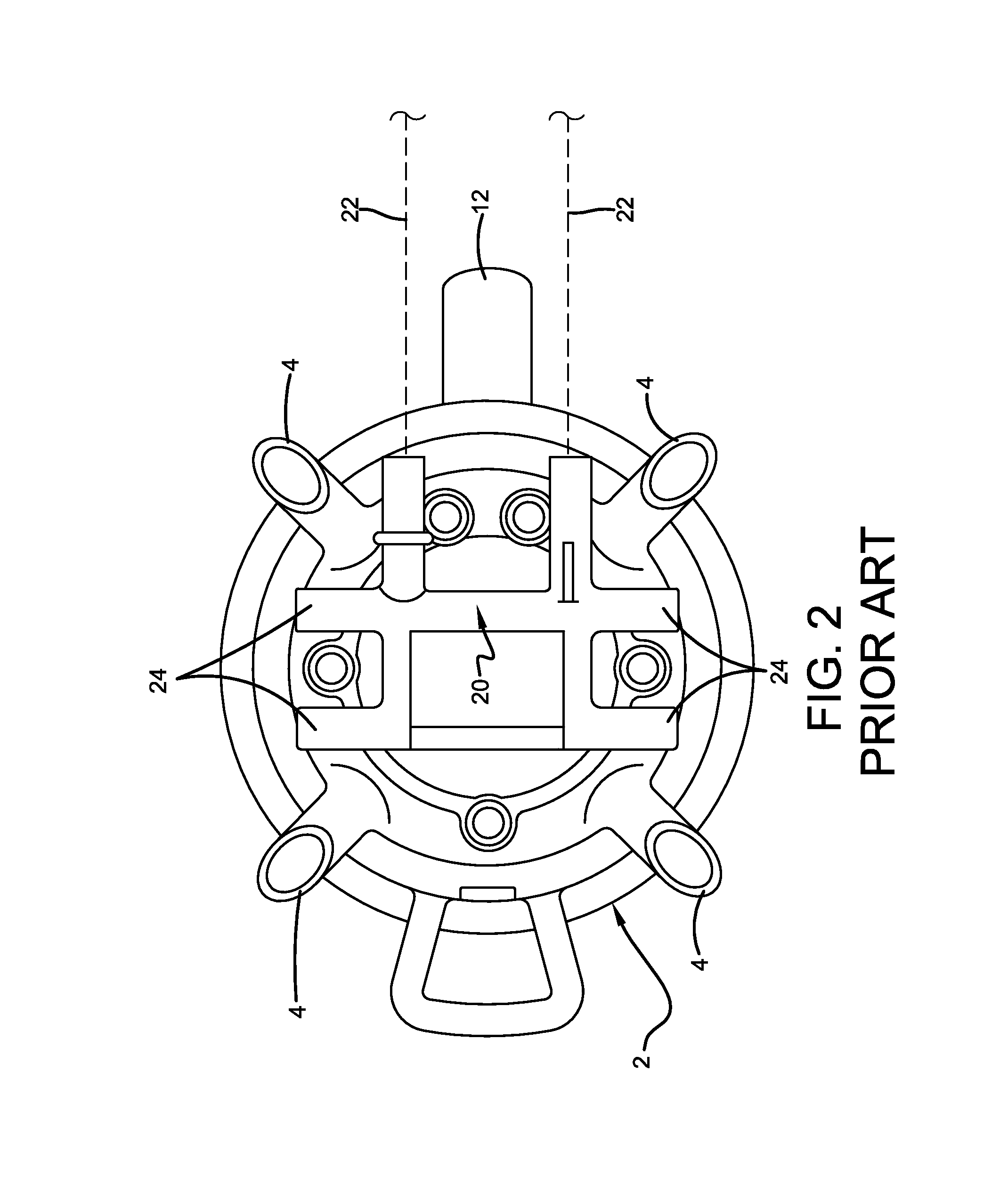Dairy milking devices and methods
a milking device and a technology for dairy products, applied in the field of dairy milking devices and methods, can solve the problems of difficult to handle all four liners in this fashion, and achieve the effects of improving the milking cluster, improving the alignment of the cluster, and being convenient to handl
- Summary
- Abstract
- Description
- Claims
- Application Information
AI Technical Summary
Benefits of technology
Problems solved by technology
Method used
Image
Examples
Embodiment Construction
[0060]An exemplary configuration of a claw top with an integrated air fork is indicated generally by the numeral 102 in FIGS. 5-8. Claw top 102 may be fabricated from a variety of materials such as metals and plastics. Claw top 102 may be removably connected to or integrally formed with any of a variety of claw bodies. Claw top 102 includes a plurality of liner nipples 104 and a corresponding number of pulsation nipples 106. Each pair of nipples 104 and 106 that are next to each other and configured to work with a single milking liner and shell combination is a nipple pair. Claw top 102 of FIG. 5 has four nipple pairs. Each liner nipple 104 is configured to be connected with the lower end of a short milk tube and each pulsation nipple 106 is configured to be connected with the lower end of a short air tube. Each nipple 104 and 106 extends away from the upper wall 108 of claw top 102 at an extension direction. The extension direction of each nipple of a nipple pair is substantially t...
PUM
 Login to View More
Login to View More Abstract
Description
Claims
Application Information
 Login to View More
Login to View More - R&D
- Intellectual Property
- Life Sciences
- Materials
- Tech Scout
- Unparalleled Data Quality
- Higher Quality Content
- 60% Fewer Hallucinations
Browse by: Latest US Patents, China's latest patents, Technical Efficacy Thesaurus, Application Domain, Technology Topic, Popular Technical Reports.
© 2025 PatSnap. All rights reserved.Legal|Privacy policy|Modern Slavery Act Transparency Statement|Sitemap|About US| Contact US: help@patsnap.com



